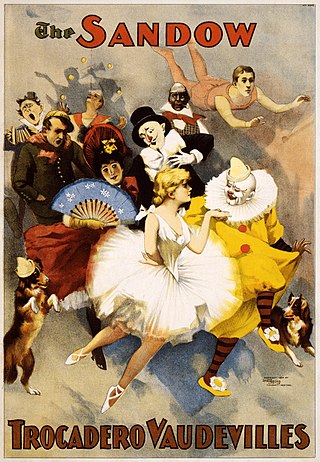
Vaudeville is a theatrical genre of variety entertainment born in France at the end of the 19th century. A vaudeville was originally a comedy without psychological or moral intentions, based on a comical situation: a dramatic composition or light poetry, interspersed with songs or ballets. It became popular in the United States and Canada from the early 1880s until the early 1930s, but the idea of vaudeville's theatre changed radically from its French antecedent.
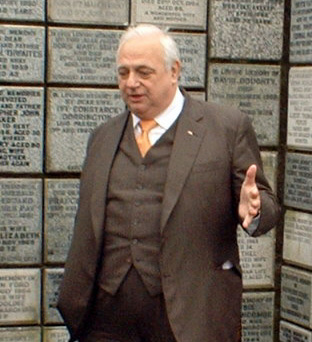
Roy Hudd, OBE was an English comedian, actor, presenter, radio host, author and authority on the history of music hall entertainment.

Norman Evans was an English stage and radio comedian, best remembered for his sketches and programmes entitled "Over the Garden Wall".
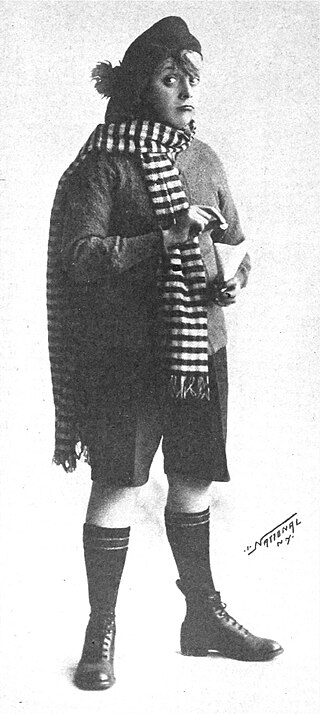
George Wood Bamlett OBE, known professionally as Wee Georgie Wood, was a British comic entertainer and actor who appeared in films, plays and music hall revues. He had a lengthy career of over fifty years, based on exploiting the childlike appearance that he retained in adulthood.
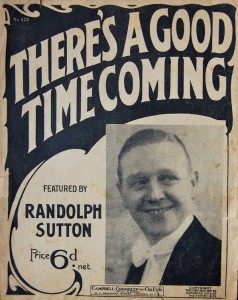
John Randolph Sutton was an English singer and comic entertainer in music hall and variety shows.

Kate Carney was an English singer and comedian who played the music halls in London.

Cecilia Loftus was a Scottish actress, singer, mimic, vaudevillian, and music hall performer in the late 19th and early 20th centuries.

Ernest Alfred Henry Remnant, known professionally as Jimmy Wheeler, was a British variety theatre comedian and pioneer of radio and television. Earlier in his career he worked with his father in the double act Wheeler and Wilson.
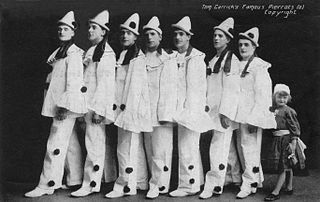
A concert party, also called a Pierrot troupe, is the collective name for a group of entertainers, or Pierrots, popular in Britain during the first half of the 20th century. The variety show given by a Pierrot troupe was called a Pierrot show.
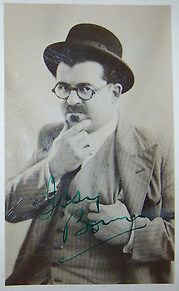
Issy Bonn was a British comedian, singer, actor, and theatrical agent. His signature song was "My Yiddishe Momme".

George Henry Elliott was a British music hall singer and dancer. Known as "The Chocolate Coloured Coon", he performed with a painted brown face and dressed entirely in white: white top hat, white tail-coat which came down well below the knees, white gloves, white tie or cravat, white trousers, white shoes and white cane.
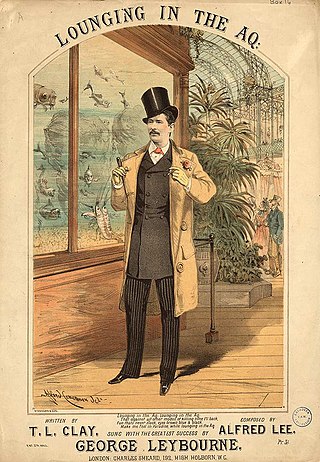
The lion comique was a type of popular entertainer in the Victorian music halls, a parody of upper-class toffs or "swells" made popular by Alfred Vance and G. H. MacDermott, among others. They were artistes whose stage appearance, resplendent in evening dress, contrasted with the cloth-cap image of most of their music-hall contemporaries.

Donald Ralph Smoothey was a British stage actor, variety entertainer and comic.

Harry Murray and Harry Mooney comprised the English comedy double act of Murray and Mooney.

Joseph Forrest Whiteley, who performed as Musaire, was a British theremin player and entertainer.
Dr. Crock and His Crackpots were a British comedy band popular between the 1940s and 1960s. They were led by saxophone and clarinet player Harry Hines.

Bert Errol was a British singer and female impersonator, who was a popular entertainer in both Britain and the United States.
Peter Cavanagh was an English comic impressionist, popular on BBC radio in the 1940s and 1950s when he was known as "The Voice of Them All".
Alexander Witkin, who performed as Afrique, was a South African singer and impressionist who starred in theatre in Britain and the United States in the 1930s and 1940s.
Morris and Cowley were English variety show comedians, popular as a double act in the 1930s and 1940s. They were brothers, Harry Birkenhead and Frank Birkenhead.
















